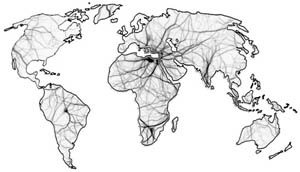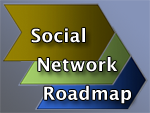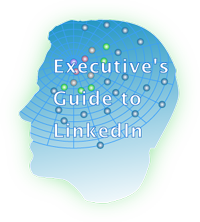Editor’s Choice of the Global Human Capital Journal—Accelerating Disruption and Opportunity
 What a year! When I wrote in the 2007 Year in Review that 2008 “would produce an unimaginable degree of change,” I had no idea how right that would prove to be. We saw major disruption in the global economy, and the U.S. presidential campaign closed the year with a major political upset, largely at the hand of social media. That said, I still believe that 2008 will prove to be a transitional year and that more profound change is on the way.
What a year! When I wrote in the 2007 Year in Review that 2008 “would produce an unimaginable degree of change,” I had no idea how right that would prove to be. We saw major disruption in the global economy, and the U.S. presidential campaign closed the year with a major political upset, largely at the hand of social media. That said, I still believe that 2008 will prove to be a transitional year and that more profound change is on the way.
Look in any direction. From a macroeconomic perspective, the global economy is showing itself to be pervasively interdependent. The U.S. successfully exported its real estate finance crisis without even working up a sweat. I don’t believe that anyone really knows where all the bodies are buried yet, and central bank chairmen, national presidents and global organization leaders are still holding their breaths, even though they smile bravely on television. Barack Obama’s successful U.S. presidential campaign showed that a new era of politics is upon us; as we’ll discuss below, it will likely redefine how “democracy” operates. A new phase of disintermediation is afoot.
In 2008, numerous microeconomic tipping points displayed themselves very clearly, and I have insights into many of them. Enterprise 2.0 is a simple fact that continues to mainstream, although execs still don’t understand the importance of cross-boundary collaboration. Web 2.0 Innovation is a look at some of the Web 2.0 innovators. Social Media Adoption takes direct aim at how adoption of Web 2.0, social networks and social media is proceeding and what factors influence adoption. Healthcare Disruptors is comprised of an analysis of healthcare reform in the U.S. as well as several examples of Web 2.0 innovation. Rethinking the Nation State projects pervasive Web 2.0 onto global politics, arguing that, as the Internet is destabilizing the enterprise by lowering transaction costs outside, Web 2.0 will act similarly on political organization.
By the way, this is Part One, and close on its heels will be my 2009 Predictions, along with my actionable recommendations for maximizing opportunities and minimizing threats to your organization and career. Please keep your seat belts fastened at all times while seated.
Thank you for your readership and support.
2008 Macro-Trends
Economy and Politics
 I have been writing about the waning of the Industrial Economy and the ascendance of the Knowledge Economy for years now, and it seems to me that profound disruptive force is manifest in general. Think about it: the Agrarian Economy and Industrial Economy both imposed significant structure on mankind: before the Neolithic Revolution, we were mostly nomads in self-contained tribes. For the last 10,000 years or so, we have been tied to the land, which enabled us to produce our own food utilizing scale and standardization. During the Industrial Economy, agrarian goods were eclipsed in value by manufactured things and commoditized in many parts of the world. Sound familiar? Now, differentiation and value are morphing to customer experience, in the forms of knowledge, entertainment, science, health… Manufactured goods have largely become commoditized. In many markets, production has outstripped demand. The entire model is in crisis.
I have been writing about the waning of the Industrial Economy and the ascendance of the Knowledge Economy for years now, and it seems to me that profound disruptive force is manifest in general. Think about it: the Agrarian Economy and Industrial Economy both imposed significant structure on mankind: before the Neolithic Revolution, we were mostly nomads in self-contained tribes. For the last 10,000 years or so, we have been tied to the land, which enabled us to produce our own food utilizing scale and standardization. During the Industrial Economy, agrarian goods were eclipsed in value by manufactured things and commoditized in many parts of the world. Sound familiar? Now, differentiation and value are morphing to customer experience, in the forms of knowledge, entertainment, science, health… Manufactured goods have largely become commoditized. In many markets, production has outstripped demand. The entire model is in crisis.
But enough theory. What does this mean for executives today? Plan for more uncertainty than you expect. In January 2008, the Executives’ Club’s Economic Outlook for 2008 featured a blue-ribbon panel of economists, who predicted, at most, a “touch and go recession” in 2008. They were looking at the world as business as usual, and they are in the best company around the world. Consider that we well may be quite far off the map. There’s an excellent chance that this is not only a “financial crisis,” so adopt a mindset that challenges assumptions because models based on outdated assumptions trip up conventional wisdom during periods of disruption. Therein you will find rare opportunities. I am advising my clients to expand their peripheral vision and to consider unorthodox sources and ideas.
Many pundits have compared the 2008/Obama win to the 1960/Kennedy win, but this significantly devalues the impact of social media. The Kennedy/Nixon television debates did open the candidates to millions of people and were an important milestone in modern democratic politics. The debates ushered in the TV political age. However, Obama’s use of social media will change the political process more profoundly because individuals can get more involved and influence voting behavior far more. As I wrote in “Web 2.0 Case Study…,” social media even introduce the chance that voters will get directly involved, changing the “representative” model of government.
In “Web 2.0’s Impact…” we have another case in which a panel of experts made studied remarks that considered politics as usual and ended up missing the mark considerably. I include myself, peripherally, as I also thought it would take longer for Web 2.0 to influence general elections. The bottom line: expand your peripheral vision, and embrace, as quickly as practically possible, initiatives in which your organization collaborates directly with stakeholders. You need transparency and collaboration as a part of your DNA. This does not feel good to Industrial Economy executives, who delivered wealth through command, control and efficiency. To many, it feels wacky, messy and stupid, and they will resist and debunk. However, it’s the new Zeitgeist and organizing principle.
Obama’s campaign used social media because they had little choice if they wanted to win. They trusted
their customers, they gave them tools to help the cause, and they surprised the Clinton campaign, the rest of us and even themselves. This will be easy to discredit because it seems off the map, from a hard-nosed business management perspective. The assets cannot be easily quantified, but they are real. Read “How Social Networks Make Markets More Efficient…” to get a very practical point of view for how to use social networks to change the economics of customers and profit.
- Economic Outlook for 2008—The Executives’ Club of Chicago
- Web 2.0 Case Study: Barack Obama’s Use of Social Media
- Web 2.0’s Impact on U.S. Presidential Election Declared Minimal at Executives’ Club
- How Social Networks Make Markets More Efficient for Buyers and Sellers
Enterprise 2.0
 As I predicted last year, Enterprise 2.0 (applying Web 2.0 to the enterprise) gained traction everywhere, and I covered it extensively in 2008. Moreover, “IBM Drives Adoption of Social Networks” was honored by its inclusion in IBM Growth Strategy, which is being published by Icfai University Press.
As I predicted last year, Enterprise 2.0 (applying Web 2.0 to the enterprise) gained traction everywhere, and I covered it extensively in 2008. Moreover, “IBM Drives Adoption of Social Networks” was honored by its inclusion in IBM Growth Strategy, which is being published by Icfai University Press.
Although this is a generalization, I usually think of “enterprise 2.0” from a CIO/CTO perspective and “Web 2.0” from the CEO and CMO points of view. If you want to promote enterprise 2.0, you need to consider several possible partners, and 2008’s articles were there to help: “Web 2.0 Pureplays vs. Enterprise Vendors..” compares these two types of businesses and concludes that most CIOs will profit from doing business with both of them. “Creating Strategic and Tactical Value…” is a brief synopsis of how to think about using social networks and to work past the “us and them” thinking that pervades most enterprises (inside and outside the enterprise). Most organizations will add value by leveraging branded venues like LinkedIn, Facebook, Twitter and YouTube because they are cross-boundary, and they increase brand leverage and business/corporate development reach.
I covered fewer conferences in 2008 than 2007 because I was speaking at more of them. However, “World of Mouth…” looks at enterprise content and offers key insights into how enterprise content combines with UGC (user generated content). “Mashing up Mergers & Acquisitions…” is an excellent example of the immense untapped potential enterprise 2.0 holds for non-tech-savvy industries. Smart M&A professionals will outperform middle-of-the-road by leveraging social networks.
- IBM Drives Adoption of Social Networks with New Enterprise Adaptability Practice
- Web 2.0 Pureplays vs. Enterprise Vendors: A Real Battle?
- Creating Strategic and Tactical Value with Enterprise (Social) Networks
- World of Mouth Asserts Itself at Web Content Chicago
- Mashing up Mergers & Acquisitions and Web 2.0 at the AM&AA’s Summer Conference
Rethinking the Nation State
 One of the handmaidens of the waning of the Industrial Economy’s is imperial “first world” dominance of “third world” countries. Even more disquieting, if Knowledge Economy firms maximize value through knowledge products delivered by a “global delivery model,” is the nation state itself a relic? “Geography 3.0…” is one of the most valuable articles of 2008 if you want to understand some of the tectonic forces that are driving change above ground. “France 2.0…” resulted from interviewing France’s Finance Minister and hearing her remarks at the Executives’ Club. I tried to put myself in the shoes of an aging, imperial power, and I wondered how it could add value going forward. Although a gross simplification, I observe that the U.S. lies between Europe and the BRIC countries, so France holds many lessons for herself and the U.S.
One of the handmaidens of the waning of the Industrial Economy’s is imperial “first world” dominance of “third world” countries. Even more disquieting, if Knowledge Economy firms maximize value through knowledge products delivered by a “global delivery model,” is the nation state itself a relic? “Geography 3.0…” is one of the most valuable articles of 2008 if you want to understand some of the tectonic forces that are driving change above ground. “France 2.0…” resulted from interviewing France’s Finance Minister and hearing her remarks at the Executives’ Club. I tried to put myself in the shoes of an aging, imperial power, and I wondered how it could add value going forward. Although a gross simplification, I observe that the U.S. lies between Europe and the BRIC countries, so France holds many lessons for herself and the U.S.
Another uncomfortable question: what happens to declining economic powers? In the past, their weakness led to takeover by stronger countries, but this is decreasingly possible, as nations are now global legal entities. “India Trade Minister…” is my reportage of Shri Kamal Nath’s Chicago address. It offers a glimpse of India’s emerging role in the new “global economic architecture.” A considerable portion of client work this year concerned Asian entrepreneurs who are buying “western” firms and flipping them or integrating them into their strategic global portfolios. “New from the Unorthodox…” discusses this new viable exit possibility. You may also want to dip into the 2007 bin and reread “Globalization’s 21st Century Makeover.”
- Geography 3.0: What It Is and What It Means
- France 2.0: French Finance Minister Declares French rEvolution in Economic Policy
- India Trade Minister Draws Chicago-India Transformation Parallels at Executives’ Club
- New from the Unorthodox Exit Strategy Department—Acquisition by an Asian Firm
Healthcare Disruptors
 Client activity this year took me into how social networks are presenting in the U.S. healthcare system. I kicked the year off by attending the Executives’ Club’s excellent Healthcare Reform Summit. See “The U.S. Healthcare System…” for a full report of thoughts from conventional experts as well as some disruptive thinking in my Analysis and Conclusions. I also published several short case studies, which I will present next month at the Social Networking Conference. Everyone agrees that healthcare needs reform, but they do not agree on how to bring it about. If established interests will not produce the change, it will probably be done for them out of necessity. The case studies represent disruption along many vectors: privacy (PatientsLikeMe), experience (Mayo Clinic), enterprise 2.0 (Pfizer< strong>), community (Sermo), innovation (HCAR) and government (CDC).
Client activity this year took me into how social networks are presenting in the U.S. healthcare system. I kicked the year off by attending the Executives’ Club’s excellent Healthcare Reform Summit. See “The U.S. Healthcare System…” for a full report of thoughts from conventional experts as well as some disruptive thinking in my Analysis and Conclusions. I also published several short case studies, which I will present next month at the Social Networking Conference. Everyone agrees that healthcare needs reform, but they do not agree on how to bring it about. If established interests will not produce the change, it will probably be done for them out of necessity. The case studies represent disruption along many vectors: privacy (PatientsLikeMe), experience (Mayo Clinic), enterprise 2.0 (Pfizer< strong>), community (Sermo), innovation (HCAR) and government (CDC).
- The U.S. Healthcare System: Can This Patient Be Saved?
- PatientsLikeMe Case Study
- Mayo Clinic Case Study
- Pfizer Case Study
- Sermo Case Study
- HCAR Case Study
- CDC Case Study
Web 2.0 Innovation and Culture
 Another conference debut in 2008 was TechCocktail Conference 1.0, which was an excellent overview from the ground floor of Web 2.0 innovation and entrepreneurship. Most enterprise executives have little direct experience with emergent innovation where it’s happening, on the Web 2.0 shop floor. For a taste, read “Web 2.0 and Social Media Uncorked…” More tongue in cheek but still eye-opening is “Bank Panic in Second Life…” whose real money economy is larger than seven nations’ GNP. And it’s a mere fringe activity; think about what will happen if it gets more mainstream? Many market leaders (IBM) have placed aggressive bets on it—for good reasons.
Another conference debut in 2008 was TechCocktail Conference 1.0, which was an excellent overview from the ground floor of Web 2.0 innovation and entrepreneurship. Most enterprise executives have little direct experience with emergent innovation where it’s happening, on the Web 2.0 shop floor. For a taste, read “Web 2.0 and Social Media Uncorked…” More tongue in cheek but still eye-opening is “Bank Panic in Second Life…” whose real money economy is larger than seven nations’ GNP. And it’s a mere fringe activity; think about what will happen if it gets more mainstream? Many market leaders (IBM) have placed aggressive bets on it—for good reasons.
- Web 2.0 and Social Media Uncorked at TechCocktail Conference 1.0
- Bank Panic in Second Life Prompts Battlefield Promotion of Regulators
Social Media and Web 2.0 Adoption Trends
 Last in category only because it’s my favorite is the study of social media/Web 2.0 adoption. As loyal readers know, I predict that Web 2.0 will dwarf Web 1.0’s importance in economy and culture because it changes human relationships: with whom we interact, what we’re able to do, how we interact and where we interact. In the long-term, marketing as practiced in the 20th century will be regarded as a dinosaur (I’m not saying that we are there yet, and timing is always the tough one). Simply put, people prefer to be advised by other people, and now individuals have gone digital, so they are rapidly gaining the scale that used to give marketers the big megaphone.
Last in category only because it’s my favorite is the study of social media/Web 2.0 adoption. As loyal readers know, I predict that Web 2.0 will dwarf Web 1.0’s importance in economy and culture because it changes human relationships: with whom we interact, what we’re able to do, how we interact and where we interact. In the long-term, marketing as practiced in the 20th century will be regarded as a dinosaur (I’m not saying that we are there yet, and timing is always the tough one). Simply put, people prefer to be advised by other people, and now individuals have gone digital, so they are rapidly gaining the scale that used to give marketers the big megaphone.
Client work through the Executive’s Guide to LinkedIn service line this year has enabled me to work with executives in the trenches of adoption, and I have met with management of LinkedIn, Visible Path, Jigsaw and others. “Enterprise Digital Social Networks…” is one of my strongest pieces of 2008. It treats executive adoption as of fall 2008, while “San Francisco Social networking Conference…” was in July and features reportage on GE, GM, Deutsche Telekom, and IBM initiatives with LinkedIn, Twitter, YouTube, Facebook and internal initiatives. “Inside the Innovation…” explains how I am using social networking itself to build the Executive’s Guide to LinkedIn service line, complete with community, promotion and operations. Very instructive for an increasing number of executives, since community is the new marketing.
- Enterprise Digital Social Networks: Executive Adoption Snapshot
- San Francisco Social Networking Conference Provides Mid-year Adoption Snapshot
- Inside the Innovation of the New Fall Executive’s Guide to LinkedIn Seminars
Two Other Blogs Launched: The Social Network Roadmap and the Executive’s Guide to LinkedIn
As you may have noticed, the quantity of articles published in the Global Human Capital Journal diminished in 2008, but the volume of writing about social networks and Web 2.0 has increased significantly. I fielded two new entries, and both feature articles that are chunked smaller.
 The Social Network Roadmap—At the July Social Networking Conference, I unveiled this breakthrough approach to enable organizations to adopt social networks and Web 2.0 aggressively by mitigating risk.
The Social Network Roadmap—At the July Social Networking Conference, I unveiled this breakthrough approach to enable organizations to adopt social networks and Web 2.0 aggressively by mitigating risk.
- This is a strategic, accelerated adoption approach similar to my work on the e-business transformation model at PricewaterhouseCoopers Consulting.
- The blog provides behind-the-scenes insights and more hands-on practice articles. It includes links to the Social Network Roadmap’s Facebook Page and its Twitter feed.
 The Executive’s Guide to LinkedIn—LinkedIn is the primary venue for B2B executive relationships in many markets, and I have advised dozens of executives on using LinkedIn to drive innovation at their companies, and in their careers.
The Executive’s Guide to LinkedIn—LinkedIn is the primary venue for B2B executive relationships in many markets, and I have advised dozens of executives on using LinkedIn to drive innovation at their companies, and in their careers.
- The EGLI spawned its own blog, which contains a mixture of the enterprise innovation point of view as well as pragmatic articles such as the CxO guide to Twitter, social bookmarking, blogs and wikis.
- Extensive LinkedIn advice in terms of practice and strategy. Also sports a Facebook Page and Twitter feed for up to the second insights.
- It also contains numerous LinkedIn resources including the free Online Guide.
Developments at the Global Human Capital Journal
If you made it this far, you can see that 2008 was a blockbuster year for the Global Human Capital Journal. Here is a summary of key developments:
|
By the way, we don’t use your email for anything nefarious, and you directly control the contact information we have. |

[…] that the Year in Review 2008 has summarized key trends, we are in excellent position for 2009 prognostications, so welcome to […]